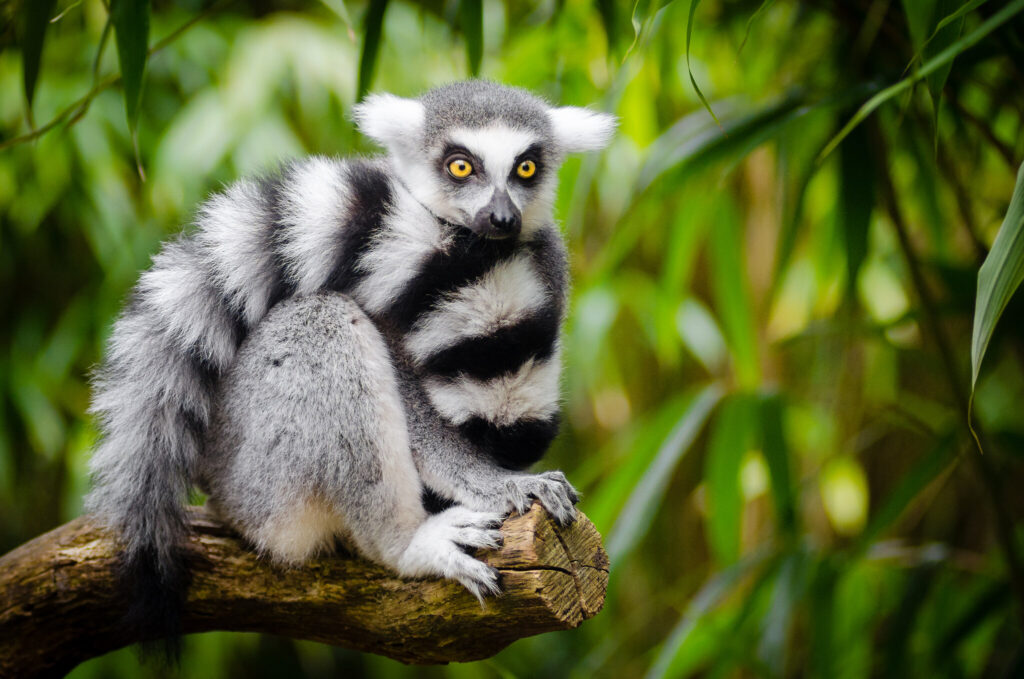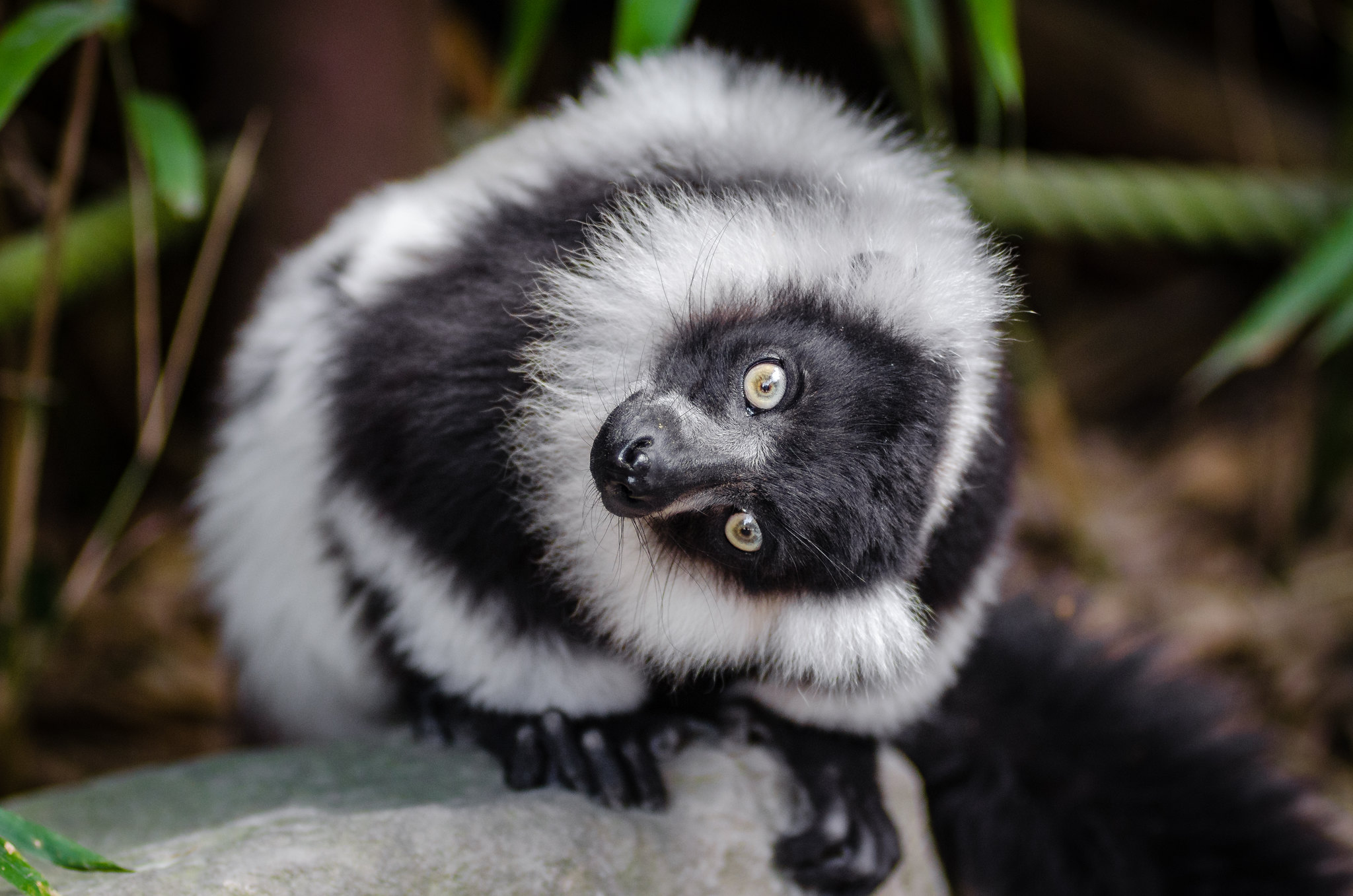By Kate Stone
Climate changes are likely to leave a lot of Madagascar’s lemurs looking for new places to live. The results of a new study from Duke University show where lemurs may seek refuge and food as temperatures rise and rainfall patterns change across the 225,000-square-mile island over the next 65 years.
Average temperatures throughout the island of Madagascar will rise by as much as 2.6 degrees by the year 2050. Rainfall patterns will probably be altered as well. Anecdotal evidence suggests climate changes are already being felt. “Older people in Madagascar talk about how much drier and hotter it is now than when they were children,” says Anne Yoder, director of the Duke Lemur Center.

Shrinking Lemur Habitat
Distant primate cousins to humans, lemurs evolved in Madagascar and are found nowhere else on Earth except in zoos and sanctuaries. They eat a vegetarian diet of leaves and fruit.
Sixty percent of lemur species are expected to lose 70 percent of their habitat before the end of the century due to climate change alone. Their habitats are predicted to shrink by hundreds of kilometers in some cases.
Hardest-hit would be species like the grey-headed lemur and the golden bamboo lemur, whose ranges are predicted to shrink to less than one percent of current sizes.
Seeking Solutions
Based on their projections, the researchers identified three previously overlooked areas on the island that will be particularly important for lemurs in the future. These include a mountainous rainforest region in northeastern Madagascar where the Duke Lemur Center has been sponsoring reforestation and other conservation initiatives since 2012.
The researchers also pinpointed key forest corridors that would need protection if lemurs are to reach future habitats from their current spots. Most conservation planning in Madagascar prioritizes areas containing the highest species diversity or the greatest number of unique species. It excludes habitats that those species might move to in the future as a result of climate change.
“The important corridors aren’t necessarily species-rich, or the only areas where some species are found,” says Jason Lee Brown of The City College of New York. “But they provide a key transition zone if lemurs are to get from the areas where they live right now to the areas that will be most suitable in the future.”
Every year, thousands of acres of Madagascar’s forests disappear due to illegal logging, mining and burning. Such habitat losses will likely increase, as the country’s current population of about 22 million people is projected to more than double by 2050.
“We’re trying to identify areas that might be neglected by current action plans but will be critically important for conservation planning in Madagascar going forward,” Yoder says.
RELATED: Climate change is recorded in narwhal tusks
The research was funded by Duke University and is published in the peer-reviewed journal Ecology and Evolution.
Featured photo: Lemur by Mathias Appel




